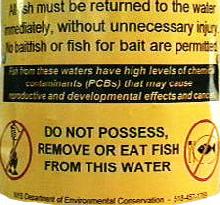
|  |
|
Why are PCBs used?
Why do they need to be cleaned up?

|
| This is a picture of a sign found by the river. |
|
 |
 |  |  |  |
 |
|
Polychlorinated biphenyls, better known as PCBs, are a type of man made chemical, also called congeners, that were widely used in industry that needed insulators, coolants and lubricants. They were used back in the 1930s until 1976, because of their ability to withstand very high temperatures, but were banned from use because of the danger they presented to animal, plant, and human life. Unfortunately, even though they were banned, they are still being used today.
PCBs are dangerous because they are considered cancer-causing agents in humans. They have also been proven to be cancerous in laboratory animals, but the threat to people is what has activist groups worried. PCBs are associated with effects on the endocrine, hormonal, intellectual, nervous, immune, and reproductive systems. Women who are pregnant must be especially careful because PCBs affect the unborn baby and newborn babies through the umbilical cord and when nursing. PCBs are considered a cause for premature birth and lower intelligence levels in children.
|
|
|
 |
PCBs made their way into the river because of two manufacturing plants owned by General Electric. The PCBs can be found in the sediment, the water, the animals in the water, and the plants found in and around the area. Most of the contamination is in the upper river where the factories are located, in a place called Thompson Island Pool, but PCB levels have been identified along the entire Hudson. |
|
|  |
 |  |  |  |
|
Some of the animals and fish affected by PCBs are the snapping turtle, muskrat, belted kingfisher, mallard duck, shad, eel, striped bass, white perch and blue fish. In terms of the fish, the recommendation is not to eat any that were caught from the river, because of the fear of bioaccumulation. This is when contaminants become stronger as they move up the food chain, so in other words, if these fish or animals have eaten other fish or animals that have eaten PCBs, they are all infected. If people eat these animals then the people can get infected too.
|
|
| This is what the dredging process looks like. |
|
|


